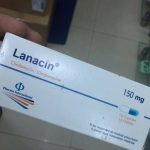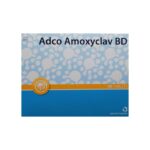Augmentin: Uses, Benefits, Dosage, Side Effects & How to Deal with Them

Augmentin, a combination antibiotic, has an interesting history that begins with the discovery of penicillin, one of the most groundbreaking antibiotics in medical history.
Penicillin, the first widely used antibiotic, was discovered by Sir Alexander Fleming in 1928. Fleming observed that a mold called Penicillium notatum had the ability to kill bacteria, leading to the development of the antibiotic penicillin.
In the 1970s, scientists discovered a derivative of penicillin known as amoxicillin. Amoxicillin is a broad-spectrum antibiotic belonging to the penicillin group, which effectively targets a wide range of bacterial infections. It became a popular choice for treating various bacterial infections due to its effectiveness, safety, and low incidence of side effects.
Researchers recognized that certain bacteria produce enzymes called beta-lactamases, which can break down and inactivate penicillin antibiotics. This discovery led to the development of clavulanic acid, a compound that inhibits these enzymes. Clavulanic acid is not effective as an antibiotic on its own but serves as a crucial addition to certain penicillin-based antibiotics.
In 1981, GlaxoSmithKline (GSK) introduced Augmentin as a combination of amoxicillin and clavulanic acid. The addition of clavulanic acid in Augmentin helped to overcome bacterial resistance mechanisms by inhibiting the beta-lactamases produced by some bacteria. This combination made Augmentin effective against a broader range of bacterial infections, including those caused by beta-lactamase-producing bacteria.
Augmentin quickly gained popularity and became a widely prescribed antibiotic. It is commonly used to treat various bacterial infections, such as respiratory tract infections, sinusitis, otitis media (ear infections), urinary tract infections, skin and soft tissue infections, and more. Augmentin is especially useful when the specific bacteria causing the infection are unknown or when there is a higher likelihood of encountering resistant bacteria.
Dosage Forms
Augmentin is available in several dosage forms to accommodate different patient needs and treatment requirements. The specific dosage form prescribed may depend on factors such as the patient’s age, the severity of the infection, and the route of administration preferred. Here are the common dosage forms of Augmentin:
1. Tablets: Augmentin tablets are one of the most commonly prescribed forms. They come in various strengths, typically containing a fixed ratio of amoxicillin to clavulanic acid. The tablets are designed to be swallowed whole with water and are available in different strengths, such as 250 mg/125 mg, 500 mg/125 mg, and 875 mg/125 mg.
2. Chewable Tablets: These tablets are formulated for children or those who have difficulty swallowing regular tablets. Chewable tablets offer the convenience of being chewed or crushed before swallowing, making them more suitable for pediatric patients. They also come in different strengths, such as 200 mg/28.5 mg and 400 mg/57 mg.
3. Powder for Oral Suspension: Augmentin is available in powder form, which can be reconstituted with water to prepare an oral suspension. This formulation is commonly used in pediatric patients or individuals who have difficulty swallowing tablets. The powder for oral suspension comes in different concentrations, such as 125 mg/31.25 mg per 5 mL and 200 mg/28.5 mg per 5 mL, allowing for accurate dosing based on the patient’s weight.
4. Extended-Release Tablets: Augmentin also comes in extended-release tablet formulations, which provide a sustained release of the active ingredients over a longer period. These tablets are typically taken once or twice daily, depending on the specific strength prescribed. Extended-release tablets offer the advantage of reduced dosing frequency and may be preferred for certain infections or patient populations.
5. Intravenous (IV) Formulations: In more severe cases or when oral administration is not feasible, Augmentin is available in intravenous formulations. These formulations are administered directly into the bloodstream through a vein and are commonly used in hospital settings. Intravenous Augmentin is typically reserved for severe infections or situations where oral medications cannot be used.
It is important to note that the specific dosage form and strength prescribed will depend on the patient’s condition, age, weight, and the judgment of the healthcare professional. It is crucial to follow the prescribed dosage and complete the full course of treatment to ensure effective results and minimize the risk of antibiotic resistance. Always consult with a healthcare provider for proper dosing instructions and guidance.
Augmentin Dosage
The appropriate dosage of Augmentin depends on several factors, including the type and severity of the infection, the patient’s age and weight, and their overall health condition. It is important to follow the dosage prescribed by your healthcare provider and not adjust the dosage without consulting them. The dosages mentioned below are general guidelines, but your specific dosage may differ.
The typically recommended dosages for Augmentin are as follows:
1. Tablets:
• Augmentin 250 mg/125 mg tablets: Typically, one tablet is taken every 8 hours (three times a day) for mild to moderate infections.
• Augmentin 500 mg/125 mg tablets: The usual dosage is one tablet every 8 hours for moderate to severe infections.
• Augmentin 875 mg/125 mg tablets: This higher-strength tablet is typically taken every 12 hours (twice a day) for more severe infections.
2. Chewable Tablets (for children):
• The dosage of Augmentin chewable tablets depends on the child’s weight. The recommended dose is generally 20-45 mg/kg/day of amoxicillin component divided into two or three doses. The clavulanic acid component remains constant at 1.25 mg/kg/dose.
3. Powder for Oral Suspension (for children):
• Augmentin powder for oral suspension is reconstituted with water before administration. The concentration of the suspension will vary based on the specific strength prescribed. The dosage is usually calculated based on the child’s weight. The recommended dose is generally 25-45 mg/kg/day of amoxicillin component divided into two or three doses. The clavulanic acid component remains constant at 1.25 mg/kg/dose.
It is essential to complete the full course of treatment, even if the symptoms improve before completion. Stopping the medication prematurely may lead to incomplete eradication of the infection and potential recurrence.
Augmentin Side Effects
Augmentin is generally a well-tolerated antibiotic, but like any medication, it can have potential side effects. It is important to note that not everyone experiences side effects, and the occurrence and severity of side effects can vary from person to person. If you have concerns about specific side effects, it is recommended to consult your healthcare provider. Here are some common side effects associated with Augmentin:
1. Gastrointestinal Effects:
• Nausea
• Vomiting
• Diarrhea
• Abdominal pain or discomfort
• Indigestion
• Loss of appetite
2. Skin Reactions:
• Rash
• Itching
• Hives (urticaria)
• Skin redness
• Swelling
3. Allergic Reactions:
• Allergic reactions to Augmentin can range from mild to severe.
• Signs of an allergic reaction may include skin rash, itching, hives, swelling (especially of the face, lips, or tongue), difficulty breathing, or wheezing.
• An allergic reaction requires immediate medical attention and should be reported to a healthcare professional.
4. Liver Problems:
• Augmentin, particularly due to the clavulanic acid component, may rarely cause liver-related adverse effects.
• Symptoms of liver problems may include jaundice (yellowing of the skin or eyes), dark urine, pale stools, abdominal pain, or persistent nausea and vomiting.
• If you experience any symptoms of liver problems, it is essential to seek medical attention promptly.
5. Other Potential Side Effects:
• Headache
• Dizziness
• Vaginal itching or discharge (in females)
• Candidiasis (yeast infection)
• Changes in taste
• Elevated blood levels of certain enzymes (e.g., liver function tests)
It is important to report any unexpected or severe side effects to your healthcare provider. They can assess your specific situation and determine whether any adjustments to your medication or further medical attention are necessary.
Please note that this is not an exhaustive list of all possible side effects. Different individuals may experience different reactions. Always read the medication information provided with Augmentin and consult your healthcare provider for personalized advice and guidance.
How to deal with augmentin side effects
Dealing with side effects from Augmentin or any medication requires a proactive approach. Here are some strategies to help manage Augmentin side effects:
1. Communicate with your Healthcare Provider: Inform your healthcare provider about any side effects you experience. They can provide guidance, assess the severity of the side effects, and determine if any adjustments to your treatment plan are necessary.
2. Follow the Prescribed Dosage: Ensure that you are taking Augmentin as prescribed by your healthcare provider. Avoid adjusting the dosage or stopping the medication without their guidance. Abruptly discontinuing the medication can lead to incomplete treatment and potential complications.
3. Take Augmentin with Food: Taking Augmentin with a meal or snack can help minimize gastrointestinal side effects such as nausea, vomiting, and abdominal discomfort. Food can act as a protective barrier, reducing the chances of stomach upset.
4. Stay Hydrated: Drinking plenty of fluids can help alleviate gastrointestinal side effects and prevent dehydration associated with diarrhea or vomiting. Water, clear soups, and electrolyte-replenishing drinks can be beneficial.
5. Consider Probiotics: Augmentin can disrupt the natural balance of bacteria in the gastrointestinal tract, leading to diarrhea or other digestive issues. Probiotics, such as yogurt or probiotic supplements, can help restore the beneficial gut bacteria. Consult your healthcare provider about the use of probiotics while taking Augmentin.
6. Manage Mild Side Effects: For mild side effects like rash or itching, over-the-counter antihistamines or topical creams may provide relief. However, it is essential to consult with a healthcare provider before using any additional medications or treatments.
7. Report Severe Side Effects: If you experience severe side effects, such as difficulty breathing, severe rash, or signs of liver problems, seek immediate medical attention. These could be signs of a serious allergic reaction or other adverse reactions that require urgent evaluation and treatment.
8. Allergy Management: If you have a known allergy to Augmentin or any other penicillin antibiotics, it is crucial to inform your healthcare provider before starting treatment. Alternative antibiotics may be prescribed to avoid an allergic reaction.
Remember, everyone’s response to medications can vary, and not everyone will experience side effects. It is important to stay in close communication with your healthcare provider throughout your course of treatment to ensure the best possible outcome.
Interactions
Augmentin can interact with certain medications, substances, and medical conditions. Interactions can affect the effectiveness of Augmentin or increase the risk of side effects. It is important to inform your healthcare provider about all the medications, supplements, and medical conditions you have before starting Augmentin. Here are some notable interactions:
1. Other Antibiotics: Augmentin should not be taken concurrently with other antibiotics, particularly those in the same class (penicillins or cephalosporins), as it can increase the risk of side effects and may not provide additional benefits.
2. Probenecid: Probenecid, a medication used to treat gout, can interfere with the elimination of amoxicillin from the body, leading to increased blood levels and a potentially higher risk of side effects.
3. Methotrexate: Augmentin can reduce the elimination of methotrexate, a medication used to treat certain cancers, rheumatoid arthritis, and psoriasis. This can increase the blood levels of methotrexate and raise the risk of its toxic effects.
4. Oral Contraceptives: Augmentin can reduce the effectiveness of hormonal contraceptives such as birth control pills. It is recommended to use additional contraceptive methods during Augmentin treatment to ensure adequate protection against pregnancy.
5. Anticoagulants: Augmentin may interact with oral anticoagulant medications, such as warfarin, and increase the risk of bleeding. Regular monitoring of blood clotting parameters is important if both medications are used together.
6. Allopurinol: Concurrent use of Augmentin with allopurinol, a medication used to manage gout and high uric acid levels, may increase the risk of developing skin rashes.
7. Probiotics: While taking Augmentin, the use of probiotics or fermented products containing live bacteria should be approached with caution. Augmentin’s effectiveness may be reduced by the presence of probiotics.
It is crucial to inform your healthcare provider about all the medications you are taking, including prescription, over-the-counter drugs, supplements, and herbal products. They can assess potential interactions and make necessary adjustments to your treatment plan.
Remember, this list does not cover all possible interactions. Always consult your healthcare provider for personalized advice based on your specific medical history and current medications.
Benefits
Augmentin offers several benefits in the treatment of bacterial infections. Here are some of the key advantages and benefits of Augmentin:
1. Broad-Spectrum Antibiotic: Augmentin is a broad-spectrum antibiotic that covers a wide range of bacteria. It is effective against many common pathogens responsible for respiratory tract infections, urinary tract infections, skin and soft tissue infections, and other bacterial infections. Its broad spectrum of activity makes it a versatile choice for treating various infections.
2. Combination of Amoxicillin and Clavulanic Acid: Augmentin combines amoxicillin, a penicillin antibiotic, with clavulanic acid, a beta-lactamase inhibitor. Clavulanic acid helps to overcome bacterial resistance mechanisms by inhibiting the enzymes (beta-lactamases) produced by some bacteria that can inactivate amoxicillin. This combination extends the spectrum of activity and enhances the effectiveness of Augmentin against resistant bacteria.
3. Enhanced Efficacy: The addition of clavulanic acid in Augmentin helps to target and eradicate bacteria that produce beta-lactamases, which are enzymes that can break down and inactivate penicillin antibiotics. By inhibiting beta-lactamases, Augmentin can overcome bacterial resistance and improve treatment outcomes.
4. Versatility: Augmentin is available in various formulations, including tablets, chewable tablets, and powder for oral suspension, which allows for convenient dosing and administration in different patient populations. It also comes in extended-release formulations for less frequent dosing. This versatility makes Augmentin suitable for a range of patients, including adults and children.
5. Well-Established Safety Profile: Augmentin has been extensively studied and used for many years, demonstrating a well-established safety profile. It is widely prescribed and considered safe and effective for the treatment of bacterial infections when used as directed by a healthcare professional.
6. Familiarity and Experience: Augmentin has a long history of use and is a trusted antibiotic choice for many healthcare providers. Its efficacy and safety have been validated through extensive clinical experience and research.
It is important to note that the benefits of Augmentin should be considered in conjunction with individual patient factors, such as allergies, medical history, and specific infection characteristics.




